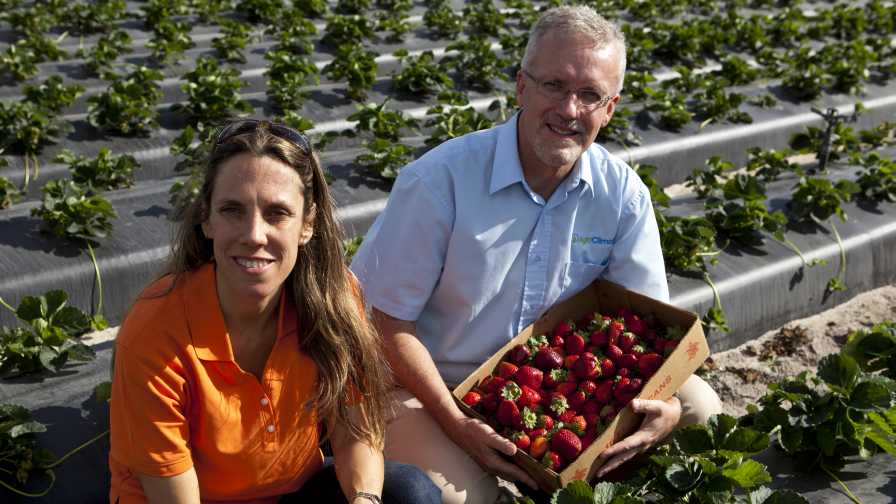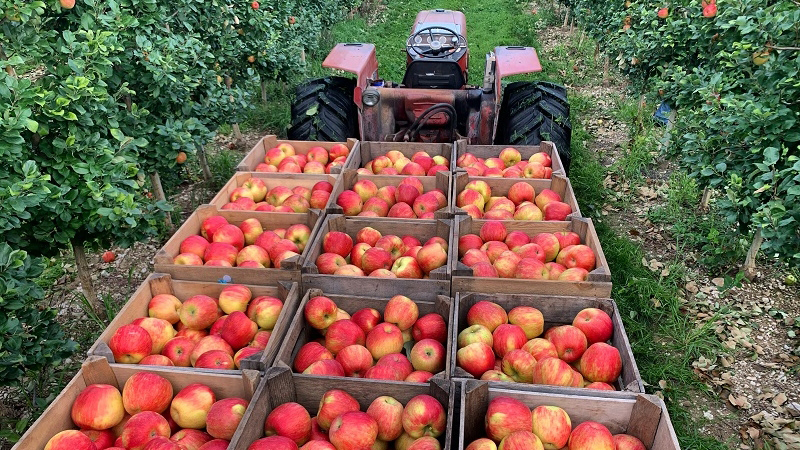Tech Tool Saving Strawberry Growers from Being in the Red

UF/IFAS researchers Natalia Peres and Clyde Fraisse developed the Strawberry Advisory System, a web-based tool that’s helping strawberry growers spray their crops at the appropriate times.
Photo courtesy of UF/IFAS
Strawberry producers in the Southeast are busy as growing season is underway. Part of the November-to-March madness is round-the-clock crop monitoring to stave off damaging disease. While frequent fungicide sprays are the norm, they’re not only costly, but also can lead to possible resistance. According to a new study, some growers are reaping the benefits of a tech tool that was designed to save crops and money at the same time.
For several seasons now, local growers have had access to the Strawberry Advisory System (StAS), a web-based program created by UF/IFAS researchers Natalia Peres and Clyde Fraisse that uses data such as temperature and leaf wetness to tell growers when to spray fungicide to ward off pathogens botrytis and anthracnose.
Based on prior research, Peres knew Florida farmers were adopting the StAS. Potential and need started to grow beyond the Sunshine State, so services were expanded to South Carolina a few years ago. For the new study, which is published in the journal Plant Disease, Peres and her UF/IFAS associates tested StAS on eight strawberry varieties at 39 commercial farms in Florida and South Carolina. They found the system saved an average of 50% of the fungicide growers normally would use without losing crop yield under different seasons, locations, cultivars, and nursery sources.
“The StAS has been valuable to growers in that it reduces not only the amount of chemical product they need to purchase, but also the number of times they have to spray,” Peres stated. “Thus, cost savings for growers are substantial. In addition, it has potential environmental and health benefits since residues on fruit are much lower. As strawberry growers in other states showed interest in the system, there was a need to evaluate whether it would work as well in other environments and with different cultivars.”
Interested growers can use the system by visiting http://agroclimate.org/tools/sas to sign up for email or text alerts.









